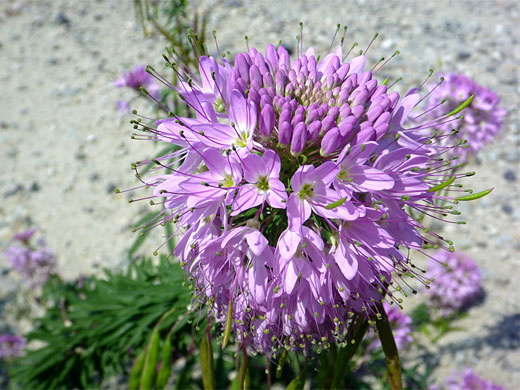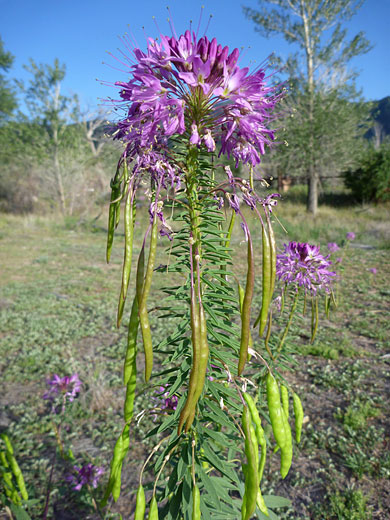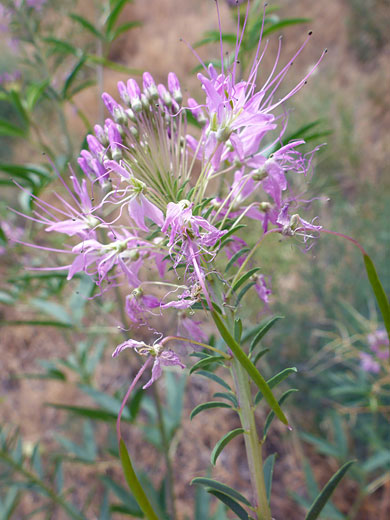
Symmetric flower head - Rocky Mountain bee-plant (cleome serrulata), near the Wind River Range in southwest Wyoming
Common names:
Rocky Mountain bee-plant, Rocky Mountain beeweed
Family:
Scientific name:
Cleome serrulata
Main flower color:
Range:
All the western states; only small areas of California, Texas and Oklahoma
Height:
Up to 5 feet
Habitat:
Grassland, plains, foothills
Leaves:
Compound; 3 leaflets, each lancelolate in shape and up to 3 inches in length
Season:
June to September
The inflorescence of cleome serrulata is large and attractive; the plant produces many rounded clusters, composed of dozens of four-petaled flowers that open gradually over a period of several weeks. Flowers are rich pink in color, with a pale center; they have six stamens and one ovary, all borne on long tubes that project some way beyond the petals. All are bright green at the tip. The abundant flowers are particularly favoured by bees. Seeds form in a long (up to 4 inches) narrow green pod, hanging downwards, and may be present lower down the stem while the upper part still has flowers and buds.
The palmate leaves grow all along the stems, in a regular arrangement. Parts of the plant have long been used for a variety of purposes, including as a food, dye and medicine.
The palmate leaves grow all along the stems, in a regular arrangement. Parts of the plant have long been used for a variety of purposes, including as a food, dye and medicine.
All Contents © Copyright The American Southwest | Comments and Questions | Contribute | Site Map




